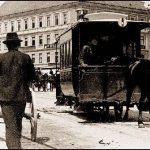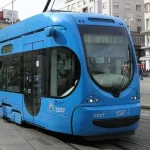After parts one and two of our history of public transport in Zagreb, we complete the story with the final period, since the WWII.
During the WWII tram line down Vodnikova and Mihanovićeva streets was built, taking some of the load off the ban Jelačić square and shortening the travel to Central station for many passengers, but a very bad thing also happened: the tram traffic through Zagreb was completely halted in 1944, because of the damage made by shelling, low number of passengers and finally not enough electricity to power the trams. It was fully restored after the war was over, in late 1945. It was only then that what we call the line numbers for various routes through Zagreb were organized as they are now: what we call number 12 tram takes you from Ljubljanica to Dubrava and back. Before the change in 1945, it had different numbers for each direction.
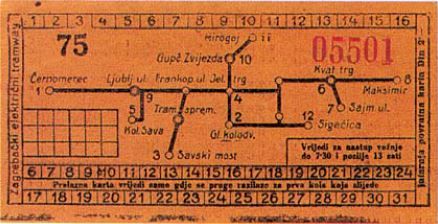
In 1946 the new revolution took place: the tram drivers got the seats they could sit on during their shifts! OK, probably not a revolution per se, but still, imagine standing up all day, driving a tram, and basically just because no one thought of putting the seat in there for you – it’s not like the drivers perform any better (or ever did perform any better) while standing up.
In 1948 Zagreb came closer to our mountain, as the trail up Mihanovićeva street was completed, finishing on Mihaljevac, where trams still turn today, and the construction of tram line from Mihaljevac to Dolje (which is still the unofficial beginning of most hikes to Sljeme) was started. It was completed in just two years, although it is somewhat different to other specifications of tracks in Zagreb, and has higher top speed.
In 1954 the biggest tragedy in Zagreb public transport history took place. On the tram line Mirogoj – Gupčeva zvijezda on 31st of October, down a very steep stretch of tracks the breaks malfunctioned (although an error by the driver was also determined to be a factor in the accident) and the tram derailed, killing 19 and injuring over 50 people. After that the line was discontinued, only to be returned to operation in 1964, but it didn’t last long, as it was permanently discontinued in 1967, because of the low number of passengers. These days it’s hard to even discern where those tracks were.
During these years Đuro Đaković factory from Slavonski brod started manufacturing the trams for ZET, in cooperation with them – in order to produce the vehicles with exact specifications requested by ZET. In 1974 Đuro Đaković was outbid in a international tender for the purchase of new tram cars and motor to the ČKD-Tatra factory from Prague, Czech republic, and it was in 1974 that the M-24 trams, legendary models operating since 1974 were withdrawn from Zagreb streets.
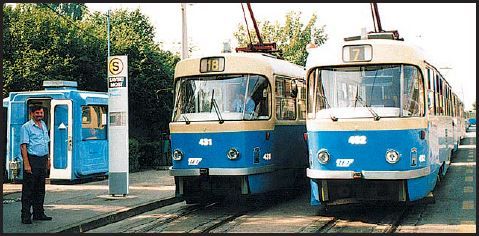
In 1979 the next big and logical step happened: Zagreb trams crossed the river Sava, connecting the newly built neighbourhoods in Novi Zagreb with the centre of the city. It took just a few years to complete the Novi Zagreb ring of tram tracks, as in 1985 it was finally possible for trams to cross two bridges and come back to the centre without having to make a turn in Novi Zagreb.
After the independence in 1990, there were a lot of needs for new tram cars and motor cars, as old ones were discontinued, and there wasn’t enough money to construct or purchase new ones, so we had quite a few different models on the streets, including some made by Đuro Đaković, Končar, imported from Czech Republic, second-hand trams purchased from the German city of Mannheim etc.
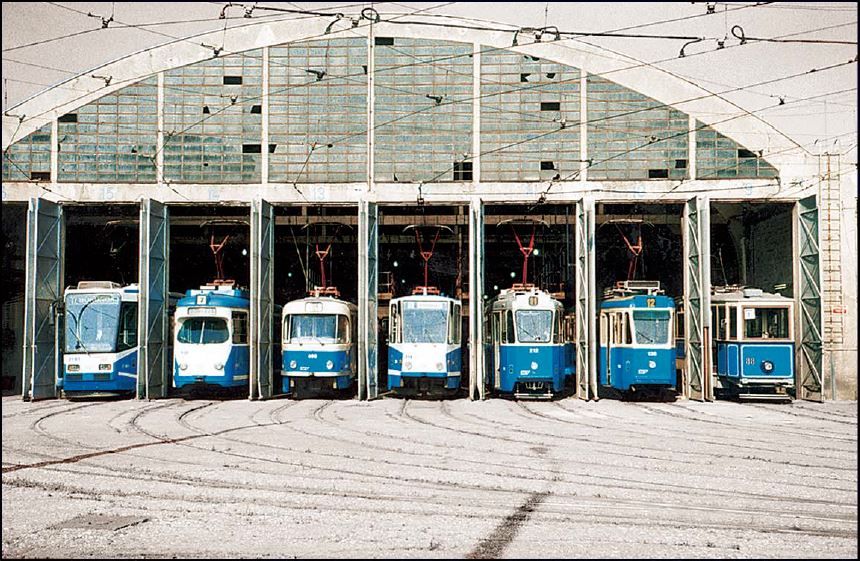
The most recent advances in public transport in Zagreb were opening of the extension of tracks from Jarun to Prečko on the west in 1999, and the extension on the east of the city, from Dubrava to Dubec in 2000. In 2005 the last important event in the history of ZET happened, when new TMK 2200 low-floor tram made by the Croatian Crotram consortium was introduced.


